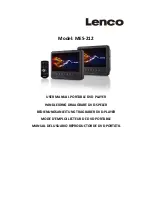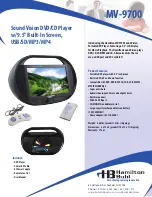
6 BK Radio
FEDERAL COMMUNICATIONS COMMISSION
REGULATIONS
The FCC rules require manufacturers to comply with the FCC RF
energy exposure limits for portable 2-way radios before they can be
marketed in the U.S. When 2-way radios are used as a consequence
of employment, the FCC requires users to be fully aware of and able to
control their exposure to meet occupational requirements. Exposure
awareness can be facilitated by the use of a product label directing
users to specific user awareness information. Your BK Radio 2-way
radio has a RF exposure product label. Also, your BK Radio owner’s
and service manuals include information and operating instructions
required to control your RF exposure and to satisfy compliance
requirements.
COMPLIANCE WITH RF EXPOSURE STANDARDS
Your BK Radio 2-way
radio is designed and tested to comply with a
number of national and international standards and guidelines (listed
below) for human exposure to radio frequency electromagnetic energy.
This radio complies with the
IEEE and ICNIRP exposure limits for
occupational/controlled RF exposure environment at operating duty
factors
of up to 50% transmitting and is authorized by the FCC for
occupational use only
.
In terms of measuring RF energy for
compliance with the FCC exposure guidelines, your radio radiates
measurable RF energy only while it is transmitting (during talking), not
when it is receiving (listening) or in Standby Mode. Note: The approved
batteries supplied with this radio are rated for a 5-5-90 duty factor (5%
talk-5% listen - 90% standby), even though this radio complies with the
FCC occupational RF exposure limits and may operate at duty factors
of up to 50% talk.
Your BK Radio 2-way radio complies with the following RF energy
exposure standards and guidelines:
•
United States Federal Communications Commission, Code of
Federal Regulations; 47 CFR §§ 1.1307, 1.1310, 2.1091 and
2.1093
•
American National Standards Institute (ANSI) / Institute of
Electrical and Electronic Engineers (IEEE) C95. 1-1992
•
Institute of Electrical and Electronic Engineers (IEEE) C95.1-
1999 Edition
INDUSTRY CANADA COMPLIANCE
This Class B digital apparatus complies with Canadian ICES-003. Cet
appareil numerique de la classe B est conforme à la norme NMB-003
Canada.
GPH-CMD Owner’s Manual 31
DEFINITIONS AND ACRONYMS
ANI
Automatic Numeric Identification
CG
Code Guard
CLR
Clear
Cloning
The process of copying data from one radio, called
“master,” to other radios, called “slaves” or “clones.”
Code Guard
A sub-audible tone for selective calling and
receiving.
Command
Group
A group of up to 20 channels selected by the user
from any of the 500 channels in the radio.
Detent
The click/hesitation you feel as you turn a knob from
one position to another.
DTMF
Dual Tone Multiple Frequency
DTMF Tones
Tones that sound like those used by a standard
push-button telephone.
ENT
Enter
FCN
Function
Individual
Personality
The information programmed with a PC on both a
global and by-channel basis that tells the radio
exactly how to operate.
LCD
Liquid Crystal Display
PROG
Program
PRI
Priority
PTT
Push To Talk
RTA
Repeater Talk Around
RTX Channel
Ready to Transmit Channel
RX
Receive
SCN
Scan
SQ
Squelch
Squelch
A control that eliminates background noise.
Talkback Scan When scanning, if a signal is present, the scan will
stop and you will hear the signal. If you can then
push the PTT switch to talk back to the person, you
are in Talkback Scan Mode.
Time-Out Timer A feature that limits the duration of calls.
TX
Transmit
UTXG
User Transmit Code Guard



































